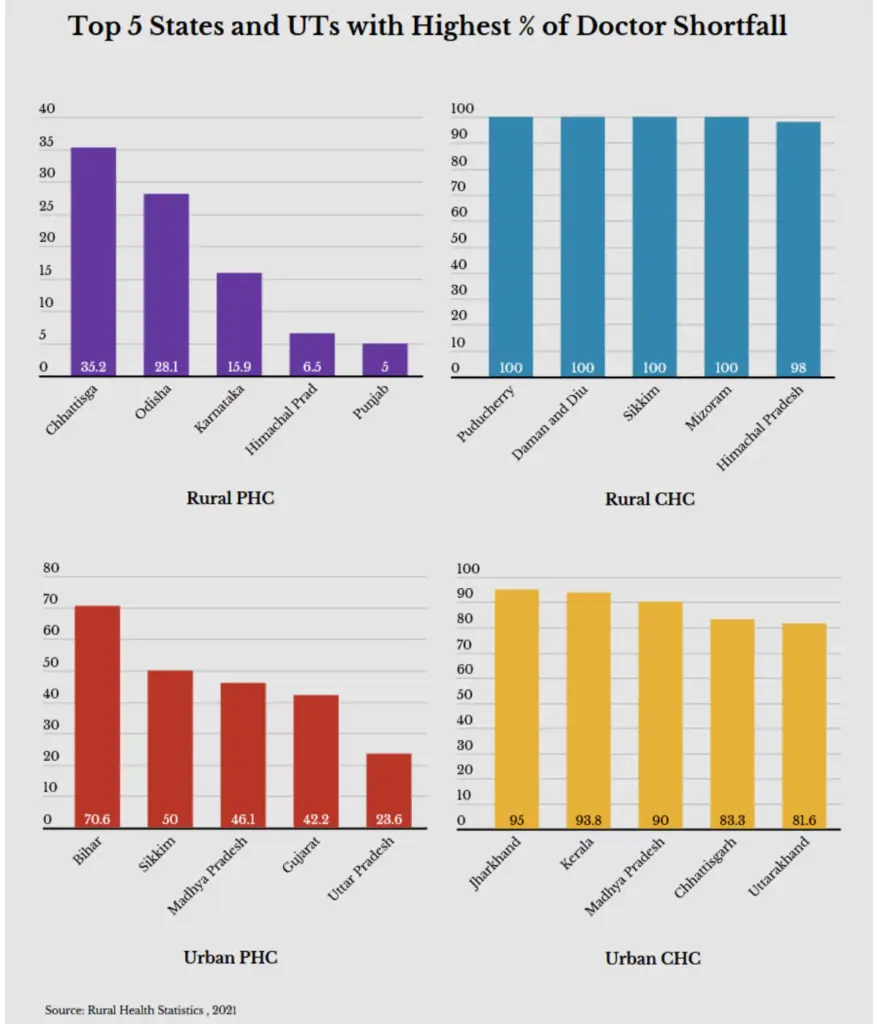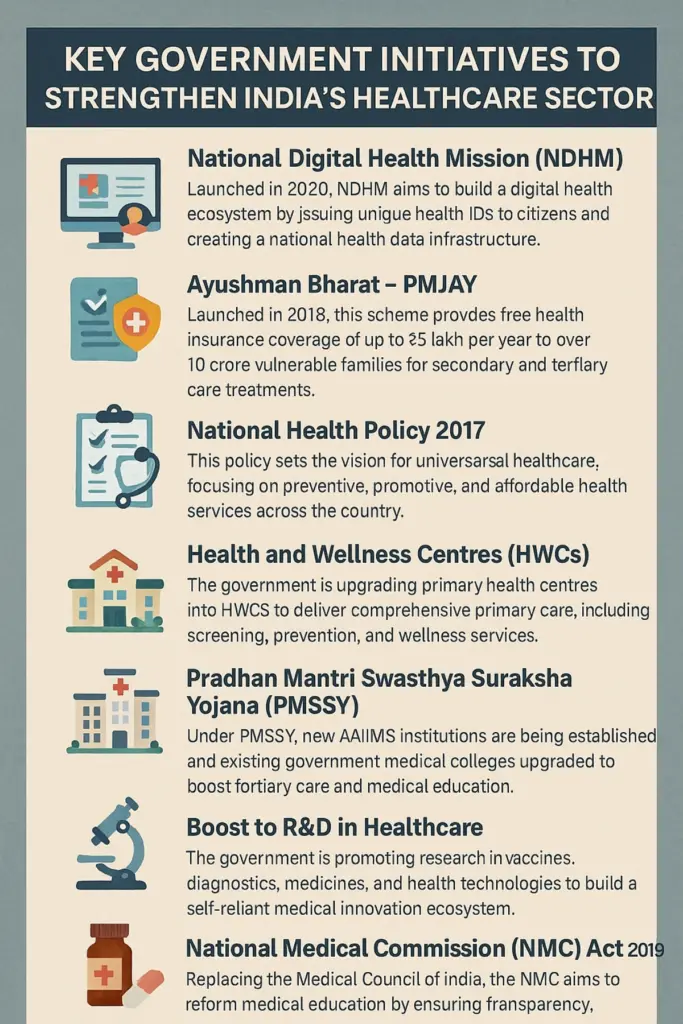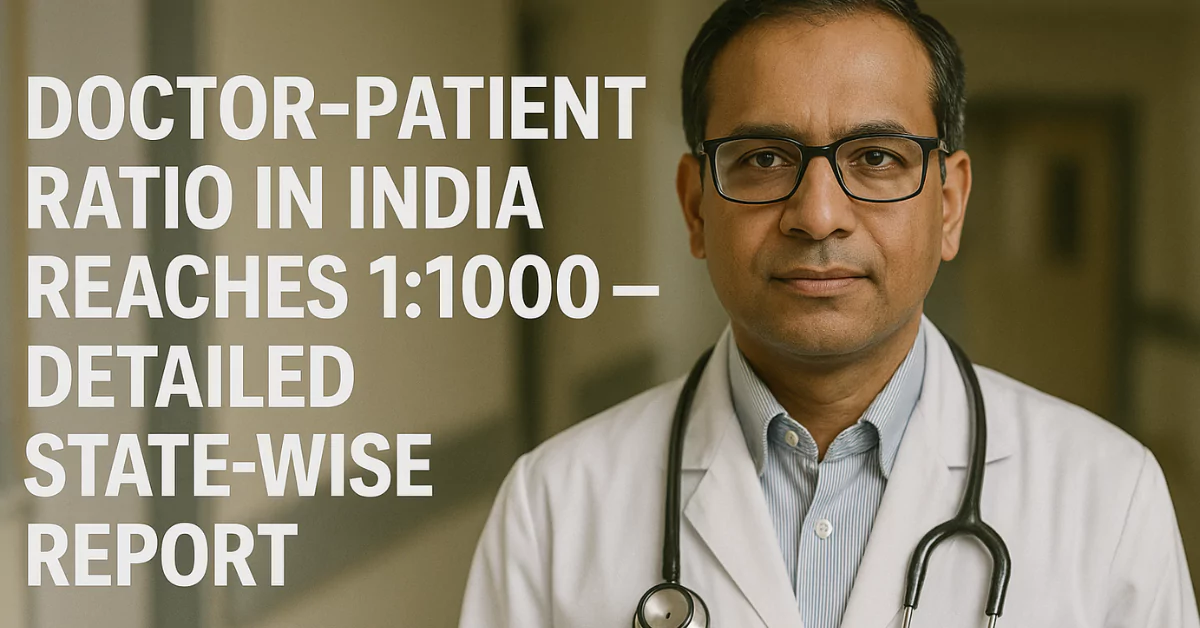At a Glance
- India Meets WHO Norm: With 13.86 lakh registered allopathic doctors, India now meets the WHO-recommended doctor-patient ratio of 1:1000.
- South India Leads: States like Tamil Nadu, Karnataka, Andhra Pradesh, and Kerala show the best doctor-patient ratios, with Goa at an impressive 1:353.
- Uneven Distribution: Despite national progress, states like Uttar Pradesh (1:2,363) and regions like Mizoram still face acute shortages.
- Rural Healthcare Gaps: Shortage of specialists, poor infrastructure, and urban-centric doctor distribution continue to weaken healthcare delivery in rural India.
As of July 2024, India has registered 13,86,136 allopathic doctors with the State Medical Councils and the National Medical Commission (NMC). While access to healthcare remains uneven across regions. The doctor-patient ratio at the national level now meets the World Health Organization’s (WHO) standard of 1:1000, with South India outperforming other regions.
India Meets WHO Standard
According to Minister of State for Health Anupriya Patel, the doctor-population ratio, assuming 80% availability of registered allopathic doctors and 5,65,000 AYUSH practitioners, is approximately 1:836. Even excluding AYUSH doctors, India stands at 1:1000, which is in line with the WHO recommendation.

State-wise Registered Allopathic Doctors in India
| SI. No. | Name of State Medical Council | Total Number of Allopathic Doctors |
| 1 | Andhra Pradesh Medical Council | 1,05,805 |
| 2 | Arunachal Pradesh Medical Council | 1,660 |
| 3 | Assam Medical Council | 25,980 |
| 4 | Bihar Medical Council | 48,200 |
| 5 | Chhattisgarh Medical Council | 10,962 |
| 6 | Delhi Medical Council | 31,479 |
| 7 | Goa Medical Council | 4,720 |
| 8 | Gujarat Medical Council | 79,169 |
| 9 | Haryana Medical Council | 15,714 |
| 10 | Himachal Pradesh Medical Council | 7,296 |
| 11 | Jammu & Kashmir Medical Council | 18,720 |
| 12 | Jharkhand Medical Council | 8,544 |
| 13 | Karnataka Medical Council | 1,41,154 |
| 14 | Madhya Pradesh Medical Council | 49,730 |
| 15 | Maharashtra Medical Council | 2,09,540 |
| 16 | Erstwhile Medical Council of India | 52,667 |
| 17 | Mizoram Medical Council | 156 |
| 18 | Nagaland Medical Council | 166 |
| 19 | Orissa Council of Medical Registration | 29,792 |
| 20 | Punjab Medical Council | 53,446 |
| 21 | Rajasthan Medical Council | 49,049 |
| 22 | Sikkim Medical Council | 1,880 |
| 23 | Tamil Nadu Medical Council | 1,49,399 |
| 24 | Travancore Medical Council (Kerala) | 73,069 |
| 25 | Uttar Pradesh Medical Council | 99,737 |
| 26 | Uttaranchal Medical Council | 10,249 |
| 27 | West Bengal Medical Council | 78,759 |
| 28 | Tripura Medical Council | 2,683 |
| 29 | Telangana Medical Council | 26,411 |
| Grand Total | 13,86,136 |
Southern States Leading
Data from the National Medical Commission reveal the South’s significant contribution to this improved ratio:
- Tamil Nadu: 1,49,399 doctors registered with TNMC
- Karnataka: 1,41,154 with KMC
- Andhra Pradesh: 1,05,805 with APMC
- Kerala: 73,069 with Travancore Medical Council
- Telangana: 26,411 with Telangana Medical Council
While Telangana appears to lag, many of its doctors are still registered with the Andhra Pradesh Medical Council. When combined, the former unified Andhra Pradesh region has a ratio of 1:681.

South India’s Strong Ratios
Southern states also exhibit some of the best doctor-patient ratios in the country:
- Goa: 1:353
- Karnataka: 1:457
- Andhra Pradesh: 1:488
- Tamil Nadu: 1:495
- Kerala: 1:509
- Telangana: 1:1452
National Comparison
- Maharashtra: Highest number of doctors (2,09,540), ratio 1:603
- Uttar Pradesh: Ratio 1:2,363, the lowest among large states
- Mizoram: Only 156 registered doctors
Medical Education Expanding
To address the growing demand, the government has expanded MBBS seats through 731 medical colleges offering 1,12,112 MBBS admissions annually. Under the Centrally Sponsored Scheme, 157 new medical colleges have been approved, and 109 are operational.
Persistent Challenges
Despite progress, key issues remain:
- Urban Concentration: Doctors prefer cities due to infrastructure, pay, and career prospects.
- Shortage of Specialists: About 70% of specialist posts at Community Health Centres (CHCs) are vacant.
- Infrastructure Gaps: Many rural PHCs lack diagnostic tools, essential equipment, and medical supplies.
- Retention Issues: Professionals placed in rural areas often leave due to poor living conditions and limited opportunities.
Structural Issues
In addition to uneven distribution, corruption and poor management plague the public healthcare system. Misallocation of resources, fraud in schemes, and inadequate supervision further weaken rural healthcare delivery.

While the South sets an example with its high doctor availability and favourable ratios, ensuring equitable access nationwide remains a challenge. Strengthening rural infrastructure, incentivizing specialists to serve in underserved areas, and addressing systemic inefficiencies will be key to building a resilient and inclusive healthcare system.

